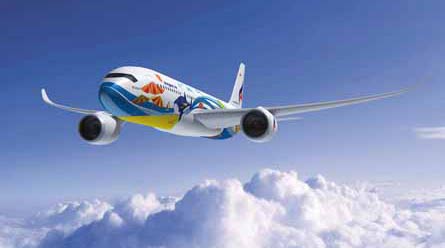Manufacturer accelerates selection of systems for A350 to enable partners to participate in joint definition phase
Airbus is accelerating the supplier selection process for the A350 and aims to have all the major systems allocated by mid-year to enable the companies to participate in the joint definition of the new twinjet.
Airbus recently renegotiated the first major A350 XWB supplier contract that had initially been agreed for the previous version of the aircraft, with Goodrich signing to provide the engine nacelle for the Rolls-Royce Trent XWB. Negotiations are under way with the other two major systems suppliers selected for the old A350 - Messier-Dowty for the main landing gear and Honeywell for the auxiliary power unit (APU).
|
|---|
A350 supplier selection will be more of a "beauty contest" as there will be no detailed definition in place |
Airbus vice-president programmes Tom Williams says that while the APU specification has not been changed significantly by the A350's redesign, Airbus has redesigned the main landing gear, which means negotiations with Messier-Dowty for the new contract will be more involved. "We've switched to a double side-stay design and split the loads between the wing and the centre wingbox, which gives us a better distribution of the loads and is more efficient in terms of weight," he says.
Most of the A350's major system suppliers are still to be selected, including those for the nose landing gear, air circulation, environmental control, electrical generation, evacuation system, fuel, hydraulics, flight controls (primary and secondary) and actuators.
Airbus would normally make supplier selections at the time of the system design freeze, which on the A350 is due to be reached in October next year, says Williams. "We're doing this much earlier on the A350 XWB and we aim to have all the key suppliers down-selected - although not contracted - by the Paris air show in June," he says.
The plan has been brought forward to enable Airbus to get the joint definition phase under way with suppliers, says Williams. "We want to get the suppliers in the planning phase as early as possible to enable more, earlier testing to be undertaken to de-risk the programme," he says.
Other manufacturers such as Boeing, Bombardier and Embraer have adopted the strategy of undertaking a joint development plan, with first-tier suppliers involved at an earlier stage of development for their latest aircraft programmes.
Williams says that as there will be no detailed definition for the A350 when it makes system selections, it will have to run a supplier "beauty contest" rather than base its choice on the specifications proposed. "We will look at their technical and financial strength, and issues like cost, lead times and resources, as well as reliability and direct maintenance cost proposals," he says.
Although Airbus is looking for an increase in risk share from its partners on the A350, Williams does not expect the level to change significantly for the equipment suppliers as it is already about 85-90% on existing programmes.
Williams says that the A350 XWB passed the preliminary definition - "main gate 3 [M3]" - point in December, although the aerodynamic definition has taken longer than planned as "there's been some debate over the optimum point for the wing's configuration across the three A350 family members".
Williams expects M4.1 - the first part of the two-phase M4 stage, when basic performance is finalised - to be reached in May, with M4.2 following later in the year when the specifications will be more defined. The M5 design freeze is due in October 2008.
Source: Flight International

















